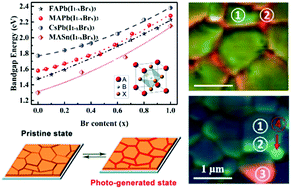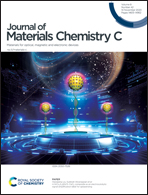Toward mixed-halide perovskites: insight into photo-induced anion phase segregation
Abstract
The tunable bandgap of mixed-halide perovskites (MHPs) makes them suitable for high-performance single-junction photovoltaics (PVs), as well as wide-bandgap components for multi-junction (tandem) structures. However, the composition engineering of halide ions, an effective procedure to adjust the bandgap of MHPs for PVs, result in photoinstability in MHPs due to the photo-induced anion phase segregation (PIAPS) effect. Specifically, MHP materials experience an inevitable phase transition from homogeneous alloys to conjugated lower/higher-bandgap phases, that is, iodide/bromide (I/Br)-rich domains, upon exposure to light. Reasonably, the sub-bandgap trapping states can lead to film inhomogeneity and performance deterioration in PVs. Meanwhile, it has been widely proven that the PIAPS phenomenon, even though it is reversible, may limit the commercial integration of MHPs in tandem applications because of their unstable output. Hence, in this review, initially, we study, analyze, and explore the “fashionable” PIAPS phenomenon systematically. Then, the feasible protocols to stabilize MHP materials, especially based on their correlation with the inherent mechanism of the PIAPS phenomenon, are adequately exhibited to help researchers develop more suitable procedures for its suppression. Finally, we provide some potential research points to study the PIAPS phenomenon and stabilize MHPs for their future commercial applications.

- This article is part of the themed collection: Journal of Materials Chemistry C Recent Review Articles


 Please wait while we load your content...
Please wait while we load your content...